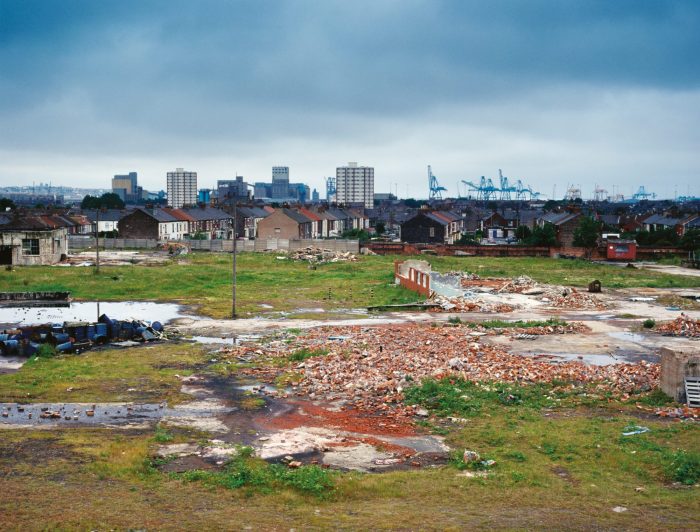Paul Nathanail, managing director of specialist environmental consultancy Land Quality Management Ltd discusses land contamination and remediation, and the requirement for sound site investigation
Land contamination is an issue for a number of developments due to the land’s history and is a factor which should not be overlooked…
#TLDR: Site intelligence reduces uncertainty and potentially speeds up build out.
This is a busy time for the planning and building control sector. Changes to the National Planning Policy Framework (NPPF) are being consulted on[1]. Local authorities and neighbourhood forums are working on development plans.
The Independent Review of Build Out[2], chaired by Sir Oliver Letwin, is seeking ways to speed up house building on sites with planning permission. Sir Oliver Letwin[3], is focusing his attention on why “once major house-builders have obtained outline planning permission to build large numbers of homes on large sites, they take as long as they do to build those homes.”
Land contamination and remediation
 One of the “web of commercial and industrial constraints” Sir Oliver has had brought to his attention is “difficulties in land remediation”. Let’s see if we can reduce some of those difficulties.
One of the “web of commercial and industrial constraints” Sir Oliver has had brought to his attention is “difficulties in land remediation”. Let’s see if we can reduce some of those difficulties.
One thing that the proposed changes to the NPPF will not change is the requirement for sound site investigation information.
A typical planning condition for land contamination matters will provide for dealing with both known and, as yet, unknown contamination. Contamination that is encountered during construction causes increased costs and delays. This is not because the contamination is necessarily difficult to deal with but because changing a construction schedule in mid-delivery is disruptive.
Soils in foundation excavations are vulnerable to deterioration if it rains. Retrofitting remediation if floor slabs have been poured is challenging. Investigating the extent of newly discovered contamination can restrict landscaping and materials handling operations even outside the curtilage of the building footprint. Minimising the chances of such unforeseen contamination pays off… big time.
Legacies of contamination
Since most contamination is a legacy from a site’s historic land uses, a sound understanding of that history and of the likely contaminants is the ideal starting point. Such understanding comes from a detailed interpretation of historic maps, environmental reports such as Envirocheck, regulatory information on permits and statutory notices as well as industrial histories and photographic archives.
Linking land use and historic engineering processes with likely location and type of contaminants can begin with the series of 47 Industry Profile booklets[4] published by the then Department of the Environment but benefits from a more detailed understanding of how the specific engineering process operated – be it a former gas works, petrol station or pesticide manufacturing plant.
The current practice of posting documents submitted with applications for planning permissions on the local planning authority’s planning portal gives an unprecedent degree of transparency. Documents are likely to be very carefully scrutinised by anyone wishing to oppose permission being granted. So there is even more reason to seek to “get it right first time”.
Benedict Cumberbatch may have swapped up his Deerstalker for Dr Strange’s cape but Conan Doyle’s words still ring true:
“It is a capital mistake to theorize before one has data. Insensibly one begins to twist facts to suit theories, instead of theories to suit facts.”
Detailed data about a site’s history and geological setting coupled with an understanding of the likely location, scale and nature of contaminants associated with historic land uses are the basis of detailed assessment and then management of risks that ensure remediation deals with genuine risks not the consequences of unknowns.
Of course, none of this prior information can account for spillages or pollution caused by the construction works themselves!
 A personal view and guest blog written for Argyll Environmental by Paul Nathanail, managing director of specialist environmental consultancy, Land Quality Management Ltd.
A personal view and guest blog written for Argyll Environmental by Paul Nathanail, managing director of specialist environmental consultancy, Land Quality Management Ltd.
This is the first of an occasional series of blogs for Argyll Environmental exploring how we can deliver more housing, quicker and more cheaply, especially on post-industrial brownfield sites. Paul combines cutting edge consultancy with expert witness, specialist training and technical guidance writing.
This blog is sponsored by Landmark Information Group Ltd, providers of the most comprehensive and flexible range of environmental and planning data services to lawyers, commercial conveyancers and environmental advisors.
[1] LINK https://www.gov.uk/government/consultations/draft-revised-national-planning-policy-framework
[2] LINK https://www.gov.uk/government/news/independent-review-to-tackle-barriers-to-building
[3] LINK https://www.gov.uk/government/publications/independent-review-of-build-out-preliminary-update
[4] LINK https://www.claire.co.uk/useful-government-legislation-and-guidance-by-country/198-doe-industry-profiles
















